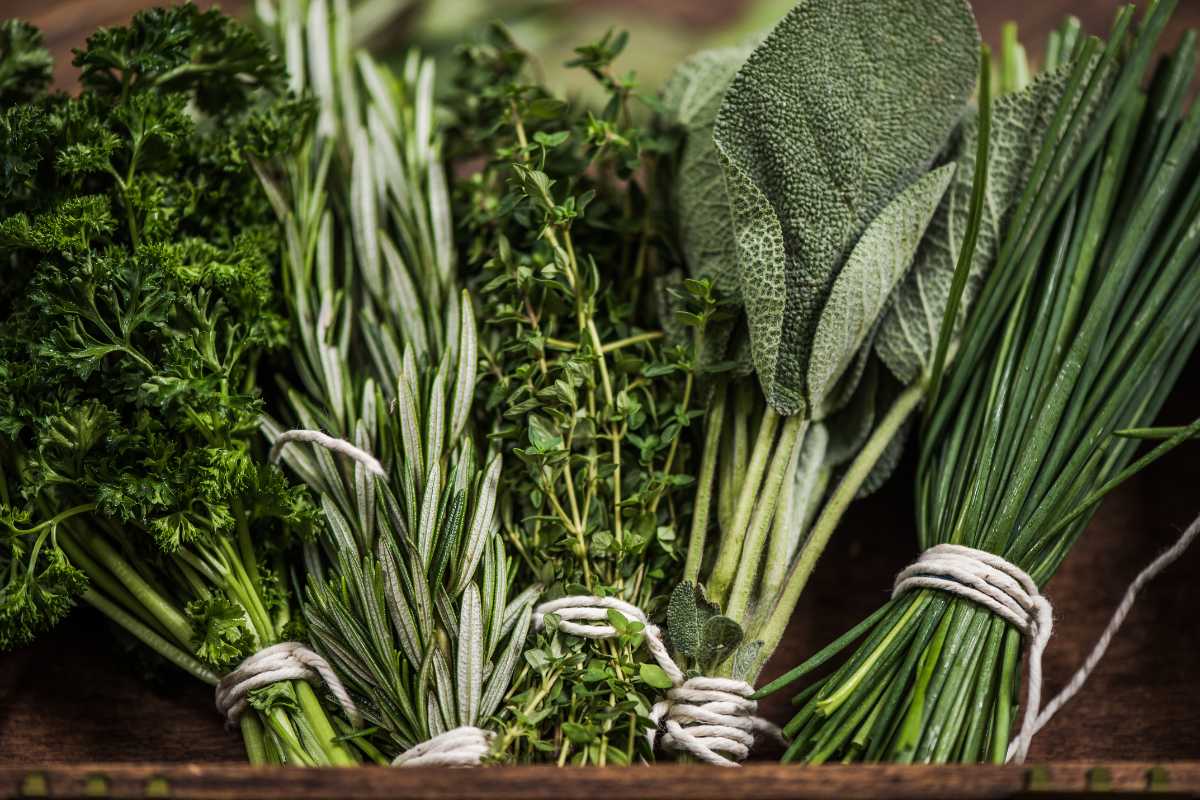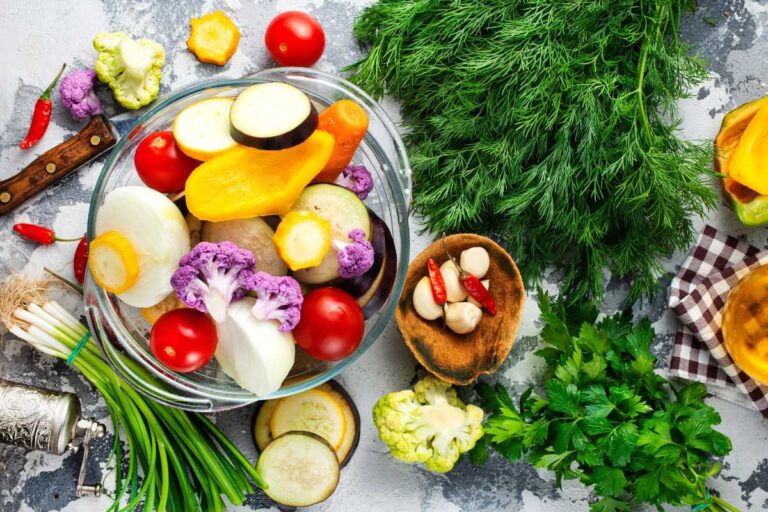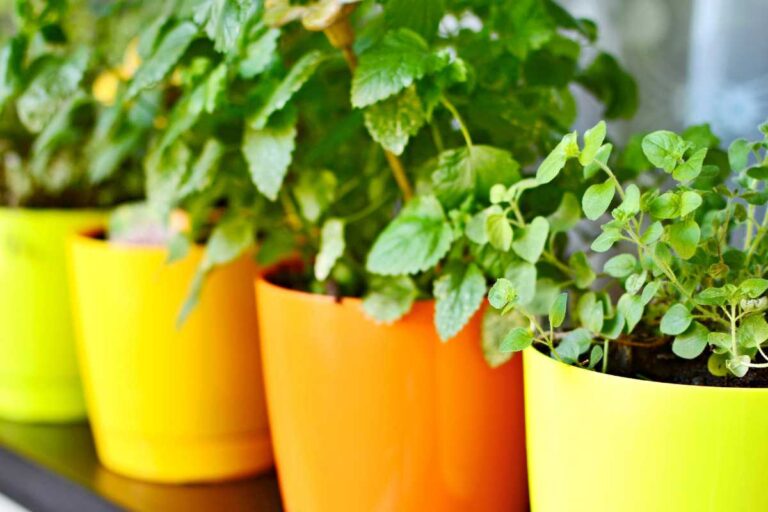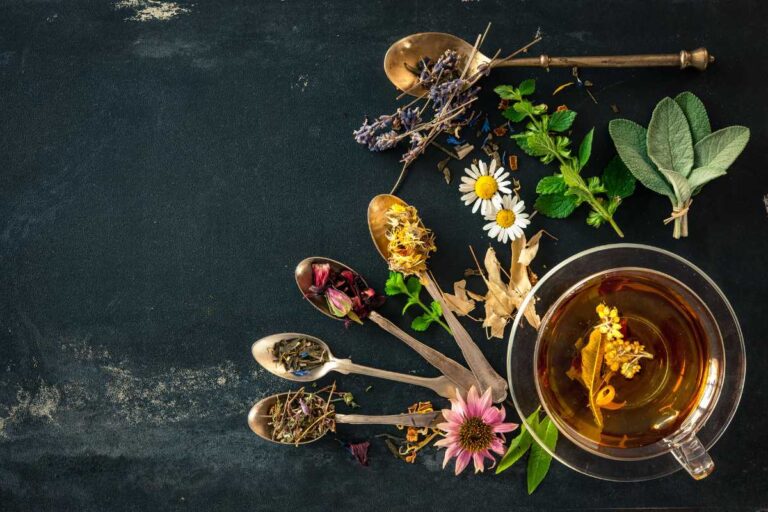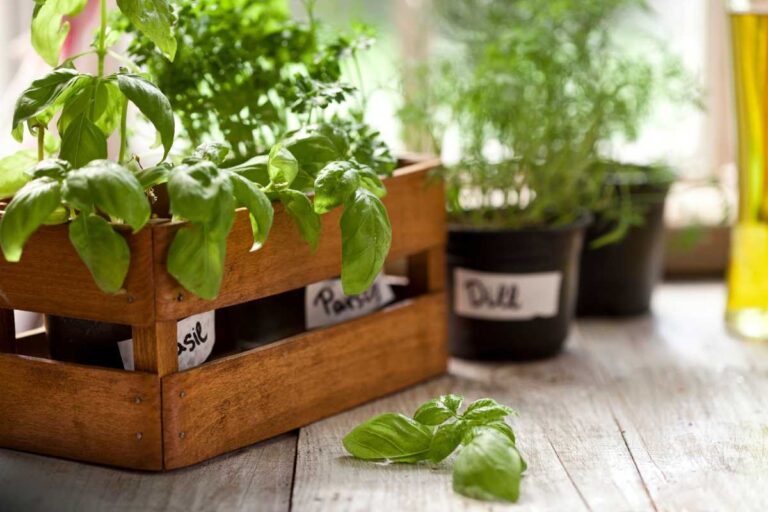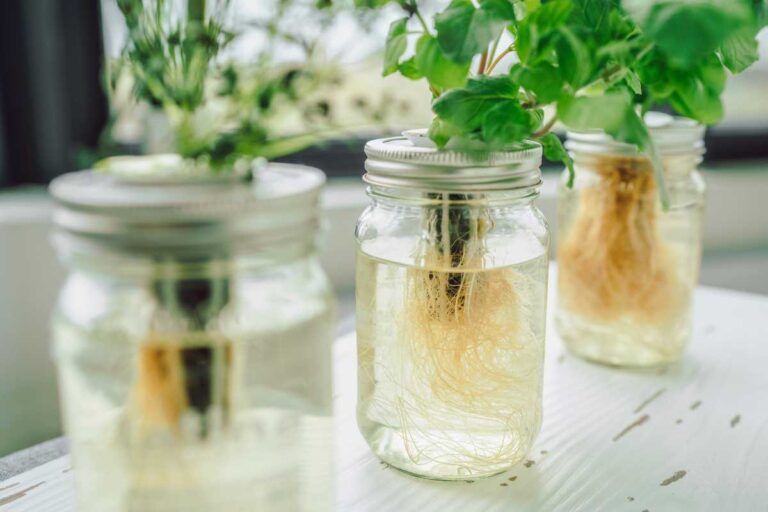Create a Flavorful Container Garden with the Best Herbs to Grow Together
Create a Flavorful Container Garden with the Best Herbs to Grow Together
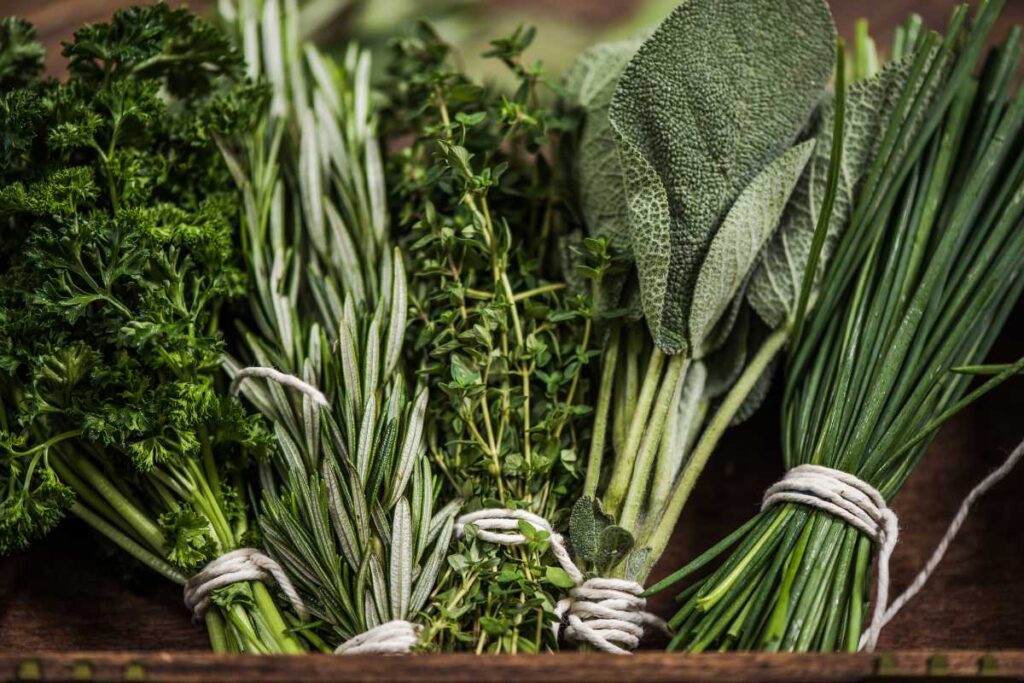
Growing herbs together in one container offers numerous benefits for herb enthusiasts. Companion planting, a technique that involves growing compatible plants side by side, can greatly enhance the health and productivity of your herb garden.
Container gardening, on the other hand, provides flexibility and convenience, making it an ideal option for cultivating herbs in limited spaces or urban environments.
By combining different herbs in a single pot, you can create a harmonious ecosystem where each plant complements and supports the growth of others. This approach not only maximizes space utilization but also promotes natural pest control and improves soil fertility.
Moreover, having herbs in separate containers allows for easy maintenance and customization based on individual plant requirements.
We will also discuss why container gardening is an excellent choice for herb cultivation. So let’s dive into the world of herbal companionship and discover how to create thriving herb gardens right at your fingertips.
Tired of struggling with outdoor herb gardens in unpredictable weather? Discover the secret to successful herbal gardening indoors and enjoy fresh herbs year-round. Check out our article now!
Companion Planting Guide for Herb Gardens
Companion planting is a clever gardening technique that involves strategically growing different plants together to maximize their benefits. Companion planting plays a crucial role in promoting healthy growth and enhancing the flavors of the herbs. In this guide, we will explore the best herbs to grow together and how they can support each other’s growth.
Understanding the concept of companion planting
Companion planting is based on the principle that certain plants have mutually beneficial relationships when planted together. By selecting good companion plants for your herb garden, you can create a harmonious environment where plants thrive and complement one another.
This practice has been used for centuries to improve yields, deter pests, and enhance flavor profiles.
Discovering great companions for your herb garden
In a dedicated herb garden, there are several perennial herbs that make excellent companions due to their complementary characteristics. For instance, parsley is known as a great companion plant as it attracts beneficial insects like hoverflies and ladybugs while repelling pests such as aphids.
When grown alongside vegetables like tomatoes or peppers, parsley acts as an effective pest deterrent.
Another good companion for many culinary herbs is dill. Dill not only adds a delightful fragrance but also attracts pollinators like bees and butterflies to your garden. Its strong scent helps repel pests such as spider mites and cabbage worms from neighboring plants.
Creating an herb spiral for optimal results
To maximize space utilization in your herb garden, consider creating an herb spiral—a structure that allows you to grow multiple herbs in a compact area while providing varying microclimates based on sun exposure and moisture levels. Good companions can be strategically placed within the spiral to optimize their benefits.
Improving soil fertility and reducing disease
Companion planting not only enhances plant growth but also improves soil fertility by utilizing resources more efficiently. Certain combinations of herbs work symbiotically by sharing nutrients and preventing soil depletion.
For example, planting nitrogen-fixing herbs like clover or alfalfa alongside other herbs enriches the soil with essential nutrients, reducing the need for synthetic fertilizers.
Moreover, companion plants can help deter pests and reduce the risk of disease. For instance, planting marigolds near your herb garden acts as a natural pest repellent due to their strong aroma.
Marigolds attract beneficial insects while repelling harmful nematodes that can damage herb roots.
Incorporating companion planting into your herb garden
When planning your herb garden, consider grouping herbs with similar soil and water requirements together. This ensures that they thrive harmoniously without competing for resources. Be mindful of the growth habits of different herbs to avoid overshadowing or overcrowding.
By incorporating companion plants into your herb garden, you create a vibrant ecosystem that promotes healthy growth and enhances flavors. Not only do these combinations repel pests and attract beneficial insects but they also improve soil fertility and reduce disease risks. So why not explore the world of companion planting and unlock the full potential of your herb garden?
Remember to experiment with different combinations to find what works best for your specific garden conditions. Happy gardening!
Ideal Herb Combinations for Container Gardening
Container gardening is a convenient and space-saving way to grow your own herbs. Whether you have limited outdoor space or simply want to bring the beauty of herbs indoors, combining different herbs in a container can create a harmonious and thriving garden.
Here are some popular combinations of common herbs that not only grow well together but also complement each other in terms of flavor and aroma.
Basil, Parsley, and Chives: A Classic Trio
One classic combination that herb enthusiasts swear by is basil, parsley, and chives. These three herbs not only thrive under similar growing conditions but also enhance each other’s flavors when used together in culinary dishes.
Basil brings its distinctive sweet yet slightly peppery taste, while parsley adds freshness and a hint of bitterness. Chives contribute a mild onion-like flavor that complements both basil and parsley perfectly. Together, they make an excellent addition to salads, pasta sauces, and soups.
Rosemary, Thyme, and Sage: Mediterranean-inspired Delight
If you’re looking to create a Mediterranean-inspired herb garden in your containers, consider planting rosemary, thyme, and sage together. These three aromatic herbs are known for their robust flavors that evoke the sunny landscapes of southern Europe.
Rosemary adds a woody fragrance with hints of pine to dishes like roasted meats or potatoes. Thyme offers earthy notes that pair well with vegetables or grilled chicken. Sage brings its slightly peppery taste that enhances the flavors of stuffing or roasted vegetables.
Mint with Lemon Balm or Chamomile: Complementary Flavors
For those who appreciate refreshing herbal teas or cocktails bursting with flavor, combining mint with lemon balm or chamomile is an ideal choice. Mint’s coolness combined with lemon balm’s citrusy undertones creates a delightful blend perfect for soothing beverages on hot summer days.
Chamomile adds floral notes that complement the mint’s freshness, resulting in a calming and aromatic infusion. This combination can be used to make refreshing iced teas, herbal cocktails, or even infused water.
Lavender, Oregano, and Marjoram: An Aromatic Trio
If you’re aiming to create an herb garden that not only provides culinary delights but also fills the air with enchanting aromas, consider growing lavender, oregano, and marjoram together. Lavender’s soothing scent combined with the earthy aroma of oregano and the sweet fragrance of marjoram creates a captivating sensory experience.
These herbs are also known for their culinary uses; lavender adds a unique floral touch to desserts or tea infusions while oregano and marjoram are staples in Mediterranean cuisine.
By combining these common herbs in your container garden, you can enjoy an array of flavors and scents while maximizing limited space. Whether you’re a seasoned gardener or just starting out, experimenting with different herb combinations is both rewarding and exciting. So grab your gardening tools and get ready to create your own herb haven!
Tips for Successful Companion Planting of Herbs
Proper Spacing for Healthy Growth
To ensure the best results when companion planting herbs, it is crucial to provide adequate spacing between each plant. Overcrowding can lead to competition for resources such as sunlight, water, and nutrients, which can hinder the growth and development of your herbs. By giving them enough room to thrive, you create an environment where they can flourish without hindering one another.
Consider Height and Growth Habits
When planning your container garden or herb bed, take into account the height and growth habits of different herbs. Some herbs may grow tall and bushy while others remain compact.
Placing taller herbs at the back or center of the garden allows them to provide shade and support for smaller ones. This strategic placement ensures that all plants receive their fair share of sunlight without casting shadows on their companions.
Rotate Your Herb Plantings Annually
To maintain healthy soil conditions and prevent nutrient depletion, it is essential to rotate your herb plantings annually. Different herbs have varying nutrient requirements, so by rotating their positions each year, you allow the soil to replenish itself naturally. This practice helps minimize pest and disease buildup since certain pests tend to target specific herb varieties.
Organic Pest Control Methods
Incorporating organic pest control methods into your companion planting strategy can help protect your herb garden from unwanted visitors. One effective approach is interplanting with insect-repellent herbs known for their ability to deter pests naturally. For example:
- Basil: Known for its strong aroma that repels flies and mosquitoes.
- Marigold: Releases a scent that keeps aphids away from neighboring plants.
- Lavender: Acts as a natural deterrent against moths and fleas.
By strategically intermixing these insect-repellent herbs among your other plants, you create a barrier that wards off pests without relying on chemical pesticides.
Companion planting herbs not only promotes healthy growth but also enhances the flavor and aroma of your culinary creations. By following these tips, you can create a harmonious herb garden where each plant thrives alongside its companions.
Remember to provide adequate spacing, consider height and growth habits, rotate your plantings annually, and utilize organic pest control methods for a successful and bountiful herb garden.
Creating a Thriving Herb Garden in One Pot
Creating a thriving herb garden in one pot can be a convenient and space-saving option. Whether you have limited outdoor space or simply prefer the convenience of having your favorite herbs within arm’s reach in the kitchen, growing herbs together in a single container is an excellent solution.
Here are some essential tips to help you get started on your journey to a bountiful harvest of the best herbs.
Choose a suitable container size based on the number of herbs you want to grow together.
Selecting the right container size is crucial for the health and growth of your herb garden. Consider how many herbs you wish to plant together and choose a pot that provides enough space for their roots to spread comfortably. A larger container will allow for better airflow and reduce the risk of overcrowding, which can lead to poor growth or pest problems.
Provide well-draining soil enriched with compost or organic matter for optimal growth.
Herbs thrive in well-draining soil that is rich in nutrients. Opt for high-quality potting mix that contains organic matter such as compost or aged manure. This will provide essential nutrients while ensuring proper drainage, preventing waterlogged roots that could cause root rot or other diseases.
Place your herb container in a location that receives adequate sunlight throughout the day.
Most herbs require plenty of sunlight to grow and flourish. Find a sunny spot indoors near a window or outside on your patio where your herb garden can receive at least six hours of direct sunlight each day. If growing indoors, consider using artificial grow lights to supplement natural light if needed.
Maintain regular watering schedule to keep your herb garden hydrated but not waterlogged.
Proper watering is vital for healthy herb plants. While different herbs have varying water requirements, most prefer consistent moisture without becoming overly saturated. Check the moisture level by sticking your finger about an inch into the soil; if it feels dry, it’s time to water. Avoid overwatering, as this can lead to root rot and other issues.
Plant a variety of herbs that are compatible and complement each other’s growth.
When choosing which herbs to grow together in one pot, consider their compatibility and growth habits. Some herbs, like mint or cilantro, can be quite invasive and may overpower other plants in the container.
On the other hand, hardy herbs like tarragon or thyme make excellent companions for a mixed herb garden. You can also plant companion vegetables such as beans, eggplants, or tomatoes alongside your herbs to create a mutually beneficial environment that deters pests and maximizes space utilization.
Maximizing Benefits: Compatible and Incompatible Herb Pairings
Growing herbs together can be a rewarding experience, but it’s important to consider their compatibility. Some herbs thrive when grown together, while others may hinder each other’s growth due to incompatible habits or nutrient requirements. By understanding which herbs work well together, you can maximize the benefits of your herb garden.
Incompatible Growth Habits and Nutrient Requirements
Certain herbs have different growth habits and nutrient needs that make them incompatible when planted together. For instance, mint is known for its vigorous growth and tendency to spread rapidly.
Planting mint alongside delicate herbs like parsley or cilantro could result in these plants being overshadowed and struggling to thrive. Similarly, dill has a taproot that grows deep into the soil, making it unsuitable for companionship with shallow-rooted herbs such as chives or thyme.
To avoid such issues, it’s crucial to research the specific requirements of each herb before planting them together.
Consider factors like soil pH, moisture levels, and spacing recommendations. This knowledge will help you create harmonious pairings that promote healthy growth for all your herbs.
Similar Water and Sunlight Needs
When planning your herb garden, grouping herbs with similar water and sunlight needs can simplify maintenance tasks while ensuring optimal growth conditions for each plant.
Herbs like rosemary, lavender, and thyme prefer dry soil conditions with plenty of sunlight. On the other hand, basil, parsley, and cilantro thrive in moist soil with partial shade.
By keeping these preferences in mind when selecting companion plants for your herb garden containers or beds, you’ll be able to provide proper care without constantly adjusting watering schedules or moving plants around based on individual requirements.
Enhancing Flavor Through Combinations
Pairing certain herbs together can enhance the flavors of both when used in cooking. For example:
- Basil and tomatoes: The classic combination of basil leaves with ripe tomatoes creates a delightful harmony of flavors, making them perfect companions in the garden and on the plate.
- Rosemary and garlic: The earthy aroma of rosemary complements the pungent taste of garlic, adding depth to dishes like roasted potatoes or grilled meats.
- Mint and lemon balm: These refreshing herbs make a delightful duo when infused in teas or used to flavor desserts, creating a burst of citrusy freshness.
Experimenting with different herb combinations can elevate your culinary creations and introduce exciting new flavors to your meals.
Trap Cropping: Attracting Pests Away
In addition to their culinary uses, some herbs can serve as “trap crops” by attracting pests away from your main crops. For instance, planting marigold alongside herbs like basil or parsley can help deter aphids and nematodes.
Similarly, dill attracts beneficial insects like ladybugs that prey on harmful pests such as aphids and spider mites.
By strategically incorporating these trap crops into your herb garden, you can protect your other plants from potential damage while promoting a healthier ecosystem overall.
Exploring the Versatility of Mediterranean Herbs in Container Gardens
Container gardening is a fantastic way to cultivate fresh herbs, even if you have limited space. Among the various options available, Mediterranean herbs stand out for their adaptability and robust flavors.
Basil, thyme, and oregano are just a few examples of these versatile herbs that thrive in containers and can elevate your culinary creations to new heights.
Bursting with Flavor
One of the key reasons why Mediterranean herbs are so popular is their ability to add a burst of flavor to dishes. Take basil, for instance. Its vibrant leaves impart a sweet and slightly peppery taste that complements salads, pasta sauces, and many other dishes.
Thyme brings its distinct earthy aroma to roasted vegetables, grilled meats, and soups. And who can resist the strong and aromatic essence of oregano? This herb elevates pizzas, tomato-based sauces, and marinades with its intense flavor.
Creating Your Own Mini Herb Garden
Inspired by the flavors of the Mediterranean region? You can easily create your own mini herb garden using containers. The first step is selecting suitable varieties for your container garden. Consider adding marjoram for its delicate citrus undertones or rosemary for its woody fragrance that pairs perfectly with roasted meats.
Fennel adds a unique anise-like flavor to seafood dishes while verbena infuses drinks with a refreshing lemony taste. Lavender not only offers delightful floral notes but also attracts beneficial pollinators to your garden.
When setting up your container garden, ensure proper drainage by choosing pots or containers with holes at the bottom. Mediterranean herbs thrive in well-drained soil mixtures that provide good air circulation around their roots.
Place your containers in an area that receives full sun exposure throughout the day as most Mediterranean herbs require ample sunlight.
Diverse Varieties for Exciting Flavors
Exploring different varieties and cultivars of Mediterranean herbs opens up a world of diverse flavors and aromas. For instance, there are several types of basil available, each with its own unique taste profile.
Thai basil brings a hint of licorice to dishes, while lemon basil adds a citrusy twist. Cinnamon basil imparts a warm and spicy flavor, perfect for infusing oils or making flavored breads.
Lovage is another herb worth mentioning. Its celery-like taste enhances soups and stews, and its leaves can be used as a garnish or added to salads for an extra layer of flavor.
By experimenting with various herb combinations in your container garden, you can create an exciting array of tastes that will elevate your culinary adventures.
Unleashing the Potential of Growing Herbs Together
We learned about the ideal herb combinations for container gardening, tips for successful companion planting, and maximizing the benefits of compatible and incompatible herb pairings. We delved into the versatility of Mediterranean herbs in container gardens.
By harnessing the power of companion planting, you can create a thriving herb garden that not only beautifies your space but also provides a bountiful harvest. Whether you have limited space or simply want to maximize efficiency, growing herbs together is an excellent strategy. So why not embark on this journey and experience the joy of cultivating a diverse range of herbs side by side?
FAQs
Can I grow different types of herbs in the same pot?
Yes, you can grow different types of herbs in the same pot. However, it’s important to consider their individual needs regarding sunlight, water requirements, and growth habits. Some herbs may thrive together while others might compete for resources or inhibit each other’s growth.
How often should I water my herb garden?
The frequency of watering your herb garden depends on various factors such as climate, soil type, and specific herb requirements. Generally, it’s best to keep the soil slightly moist but not overly saturated. Regularly check the moisture level by inserting your finger into the soil up to an inch deep – if it feels dry at that depth, it’s time to water.
Can I grow herbs indoors?
Yes! Many herbs can be successfully grown indoors as long as they receive sufficient light (at least 6-8 hours) from a sunny window or artificial grow lights. Choose compact varieties suitable for containers and provide them with well-draining soil and proper airflow.
How do I prevent pests from damaging my herb plants?
To prevent pests from damaging your herb plants, maintain good garden hygiene by removing any dead leaves or debris that could harbor pests. You can use natural pest deterrents like companion planting with pest-repellent herbs, applying organic insecticidal soaps or neem oil, and introducing beneficial insects such as ladybugs or lacewings.
How long does it take for herbs to grow from seeds?
The time it takes for herbs to grow from seeds varies depending on the herb type and growing conditions. Generally, most herbs germinate within 1-3 weeks. However, some herbs like basil and parsley may take longer. It’s essential to follow the specific instructions on the seed packet and provide optimal conditions for germination, including proper moisture levels and temperature.

